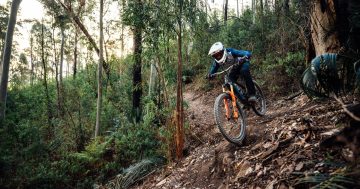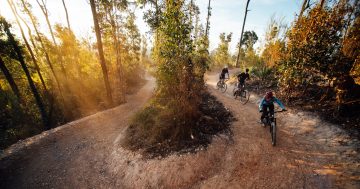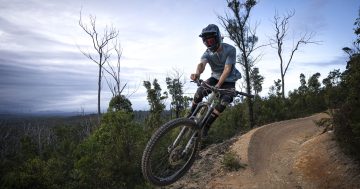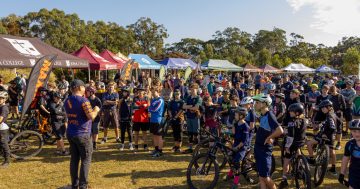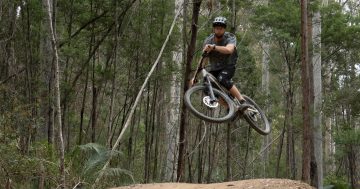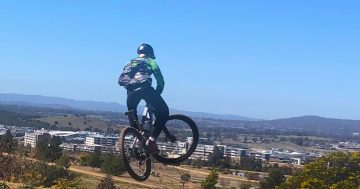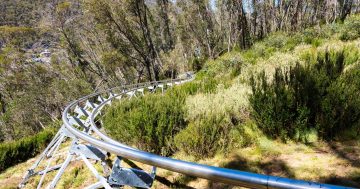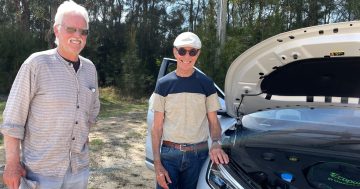
An artist’s impression of the pump track included in plans for a state-of-the-art mountain bike facility. Photo: Mogo Mountain Bike Base.
Plans for a $4 million eco-friendly, state-of-the-art mountain bike (MTB) experience in Mogo have been announced.
Mogo Mountain Bike Base will include beginner bike trails, a pump track, and a skills track set within a family-oriented accommodation precinct surrounded by the natural environment, offering easy access to forest trails.
Former South Coast resident and long-time Canberra businessman Don Maye, who is the inspiration behind the development, said the facility would also have its own community/refuge building that could be used for MTB events, as well as family reunions, weddings, or even yoga retreats.
“Parents will be able to watch their kids develop their skills from the comfort of their own cabins or campsites, while individuals, families or groups will have only a short distance (500 metres) to ride from Mogo Mountain Bike Base to the main Maulbrooks Trail Network within the Mogo Adventure Trail destination,” Mr Maye said.
“We’re already negotiating with Rocky Trails Destinations, the Eurobodalla Shire Council’s project managers who are overseeing the region’s exciting new mountain bike development.
“Ideally, we’d like a trail connecting Mogo Mountain Bike Base to the main Maulbrooks Trail so there’s no need to load the bikes onto vehicles to drive to a staging point – riders will be only a few minutes’ ride from the front doors of their cabin to the forest trails.”
An avid mountain biker, downhill skier and ice hockey player, Mr Maye’s interest in developing the Mogo Mountain Bike Base comes from his own pursuits, including trips to the Australian mountain bike mecca Blue Derby in Tasmania.
He started looking for what he conceived could be the next NSW ”go-to” mountain bike destination.
“I drove to sites and locations as far south as Eden and as far north as Ulladulla in my search before finding these 40 acres of land for sale,” he said.
Half the block had been burnt out in the devastating 2019 Mogo bushfire and this section will be the Mogo Mountain Bike Base site, while the remainder of the block will be formally set aside for biodiversity stewardship.
“This will ensure the land is managed into the future for conservation, and that there is minimal disruption to the surrounds leading into the 155km network of the shire’s mountain bike trails,” Mr Maye added.
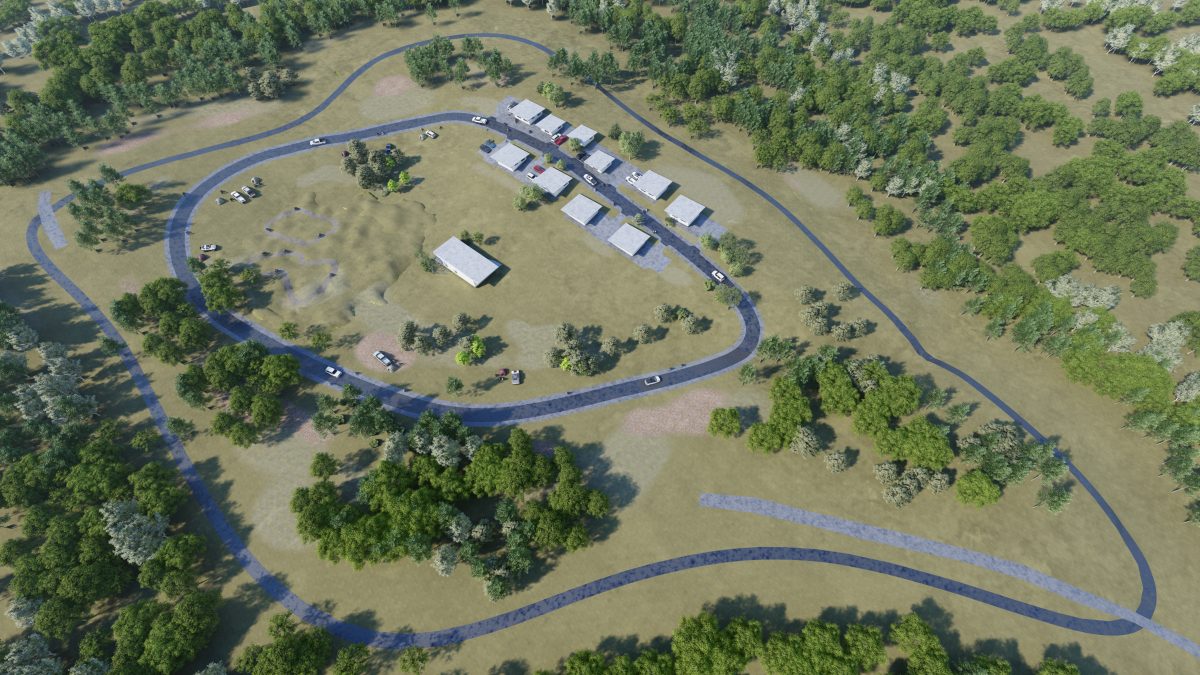
The bike tracks and accommodation will be surrounded by forest. Photo: Mogo Mountain Bike Base.
With the Narooma MTB Club set to expand its trail network, the release of the Mogo Adventure trails hub masterplan and the council’s $8 million mountain bike project investment, Mr Maye said it made “perfect sense” that Eurobodalla Shire was “the best location for this proposal”.
Mogo Mountain Bike Base will be an off-grid, eco-friendly, family-oriented accommodation precinct, with 10 two-bedroom cabins catering to a maximum of four guests, plus an additional 12 campsites.
Located about seven kilometres from Mogo village, the base is around 500m as the crow flies to the proposed Maulbrooks Road MTB staging area.
The base’s design is now complete. Its environmental, access and bushfire assessments are nearing conclusion.
“It’s important to me, especially as a former South Coast resident, that all the relevant local stakeholders – including the Mogo Local Aboriginal Land Council – are brought into this project now, because it has strong environmental and community elements about which I want everyone to be aware,” Mr Maye said.
“I also know Mogo Mountain Bike Base will contribute to an increase in tourism-related business opportunities, particularly with off-peak overnight stays.
“Mountain biking is a year-round activity with wide appeal across all ages and skill levels.”
Mr Maye said nature-based tourism was a substantial growth industry in NSW.
“The Eurobodalla Destination Action Plan has evidence of the importance to the shire of international, domestic overnight, and day trip visitors who come to our region for its natural environment,” he said.
“Mogo Mountain Bike Base will provide jobs both directly and indirectly, it will inject new income into the local economy from MTB enthusiasts, and it will help build a greater appreciation for Eurobodalla’s natural beauty, whether that be on land or in the water.”
It’s estimated construction would take about 16 months once the council approves the development application.
Original Article published by Katrina Condie on About Regional.












